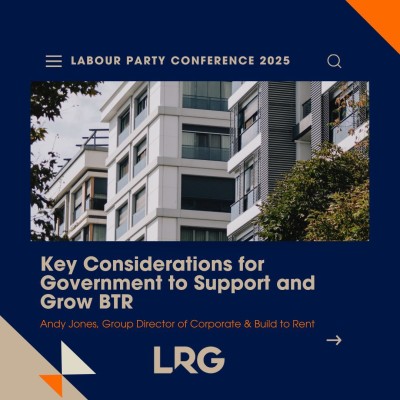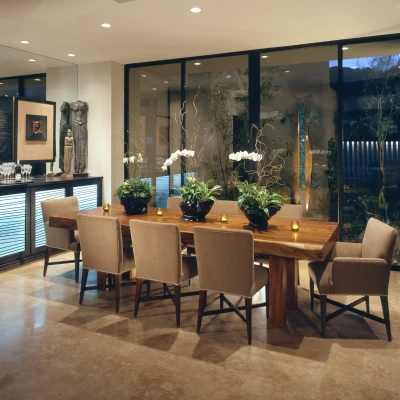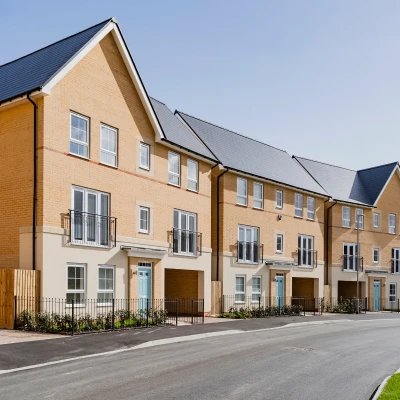The Potential for BTR to De-risk Development Schemes in an Uncertain Market

Recent political and economic uncertainty has inevitably caused some fluctuations in housebuilders’ profit forecasts: following the Truss Government’s disastrous mini-budget, analysts including Credit Suisse and Capital Economics predicted house price drops of as much as 15 per cent and volume builders including Barratt Developments and Bellway were reported to have abandoned growth plans for 2022.
With interest rates set to remain high into 2023 and many would-be home owners opting instead to rent, housebuilders will invariably review the composition, layout and viability of development sites and consequently increase the number of homes for rent.
Opportunities in the rental market
And as many developers are already finding, those factors which dented confidence in the private sale market are having the reverse impact on the private rented sector (PRS): higher mortgage rates, the potential of a housing slump and financial instability are likely to increase demand for rental properties and continue to fuel rent increases for the foreseeable future.
Despite this potential, the PRS is failing to meet demand following the withdrawal of thousands of amateur landlords from the market. According to Rightmove there are more than triple the number of prospective tenants as there are rental properties available: tenant demand is up 6% and available properties down by 50% compared to last year, and we have seen similar figures across our Leaders and Romans offices.
Build to Rent
A natural change in direction, therefore, is for property developers to capitalise upon the significantly buoyant rental market. With, according to the English Housing Survey in 2022, the number of households renting privately having increased by 93% in the last 15 years (while owner-occupied households grew by just 3%) there are incalculable advantages in doing so.
Firstly, Build to Rent (BTR) is very different product and investment opportunity compared to that of the traditionally perceived rental model: BTR epitomises the Government’s desire to ‘professionalise’ the private rented sector in providing a secure home and a high standard of both bricks and mortar and service. Successful schemes can see a 30% uplift in rents charged because of the service element.
The regional growth of the PRS is another: BTR is no longer limited to the major cities. Until recently, the vast majority of BTR schemes had been in London, but regional growth has now surpassed growth in the Capital. The British Property Federation’s Build to Rent Q2 2022 analysis found that whereas 16,474 BTR homes were under construction in London, this compared to 31,290 in the regions. Regional BTR grew 16% year-on-year, to reach 59.3% of the total BTR sector pipeline; London, meanwhile, lags behind with 8% year-on-year sector growth and 40.7% of the total pipeline. Furthermore, these figures show a discernible swing towards regional BTR in the last quarter.
This is illustrated by the number of recent appointments that we have received: in the past year, LRG has been appointed to manage and maintain the BTR properties in several regional developments, including Chatham Dockyard in Kent and Union Yard in Hampshire.
Another reason is the increase in families choosing to rent, rather than buy, is another. According to Government figures, the number of renting households with dependent children has doubled since 2003/4, and now makes up 30% of the PRS. The same survey shows that the numbers of ‘comfortable renters’ (those in managerial professions, who hold degrees, are in good health and have substantial disposable income) are expanding too, with this demographic representing 1.94 million households (44% of the PRS). Furthermore, a substantial proportion of ‘comfortable renters’ (those who can afford the service premium that is a feature of BTR schemes) expect to remain within rented properties long term.
BTR suburban communities
As the inevitable conclusion of each of these factors, a new model has evolved: the BTR suburban community. Providing desirable homes for families in fully-functioning serviced communities, this product - which offers growing families considerable flexibility and a wide range of options for a hassle-free lifestyle - is undoubtedly the sector in which we will see the greatest growth over the next decade.
The potential for expansion of this sector is almost unlimited, as counter-urbanising maturing Millennials seek family homes in bespoke communities. Those who have previously experienced the high level of service provided by traditional BTR are thought likely to form the core market for BTR suburban communities. This innovative, service-based product compares favourably with most of the PRS stock currently available, and the popularity of the product will enable BTR suburban communities to attract additional investment and grow at pace.
For developers, there are other distinct advantages in creating BTR suburban communities in an uncertain economic climate. One is that the variety of property types (residential, commercial, retail and leisure) which exist within any one community provides the opportunity for both immediate sales revenue and long-term rental revenue, with the potential to alter the make-up of a scheme according to the market conditions. There is considerable potential for amalgamation with other property classes including the later living and affordable housing sectors, and joint ventures leading to innovative cross-subsidies, and public/private partnerships provide further opportunities.
A growing market
And BTR suburban communities are entirely fitting with the lifecycle of Millennials, the oldest of whom have recently turned 40. Renting is all too often viewed as the only option to those unable to get a foot on the property ladder, but I would suggest that this is a view put forward by the older generation. In fact, renting is entirely consistent with the lifestyles of Millennials: just as many opt to rent cars, clothing, films or music, the flexible pay-as-you-go attitude is increasingly applied to property. With deposits, fees and mortgage payments out of the reach of many, the simple, single monthly payment which covers everything including onsite concierge, management, high-speed broadband and amenities which might include a gym, cinema, children’s play area, or co-working space is a simple and immediately affordable means of achieving a high standard of living.
Other factors that have contributed to the rise in BTR suburban communities include the increase in working from home and the resulting rise in counter-urbanisation. The expected publication of a Renters Reform Bill has led to amateur landlords leaving the market and thus widened the gap between supply and demand. The new legislation also supports the ‘professionalising’ of the sector – reinforcing higher quality properties, good management and security in leases.
BTR as an additional tenure
While some schemes comprise entirely of rental properties, we are also seeing developers, in response to the changing political and economic outlook, seeking to include BTR as an alternative tenure on large-scale schemes which are already under construction. Spreading the risk through a blend of tenures, and perhaps increasing the proportion of rental properties, allows for the delivery of larger sites to be accelerated. The alternative tenure rarely competes with private sales – in fact, it can help promote the homes for sale. A shift towards more rental properties also allows for site-wide infrastructure to be brought forward sooner, expediting the creation of a new community and resulting in a value increase at an earlier stage in the development lifecycle.
Looking ahead
Global institutional investors have indicated a significant increase in interest in the suburban BTR market: 70% anticipated being active within the next five years, compared to 42% currently active. Furthermore, institutional investors planned to invest £16.5bn in residential assets in 2022, a 65% increase from the £10.2bn invested in 2021. The opportunity to facilitate this investment lies with developers.
The BTR suburban communities model is in its infancy in the UK, but is extremely popular in the US and Europe. But like traditional BTR, and especially taking into account social, economic and political factors, it is certain to evolve, as it has done elsewhere.
But as we are seeing already, in our new instructions across the country, this new form of suburban BTR has a huge potential market, substantial scope for flexibility, and the potential to retain buoyancy within the property market during challenging times.

Contact Us
Got a question, general enquiry or something else?
You may also like
Since we started in 1987 we have grown to one of the UK’s largest property groups, we can save you time and money by offering a range of services and expertise under one roof.



